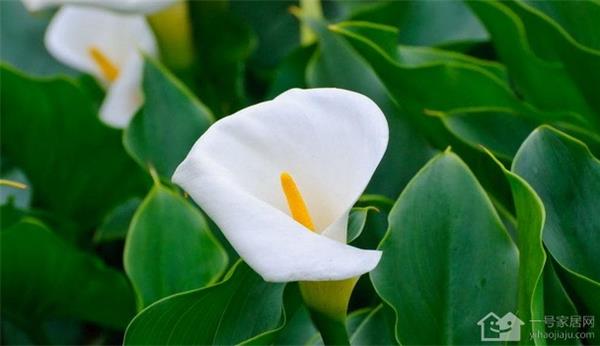Propagation method of Amorphophallus Amorphophallus
As a common household potted plant, sea taro is ornamental, with large green leaves and elegant and beautiful flowers, so many families will choose sea taro for home decoration. Do you want to raise sea taros? The following editor will introduce the culture method of sea taro, let's take a look.

The propagation method of sea taro:
1. Sowing method
Wild or field sea taros often bear seeds, which can be sown in the open field or on demand, and transplanted after emergence.
2. Insertion method
The stem of Amorphophallus is very well developed. the plant that has been growing for many years can cut a section of the stem as a cuttage in spring, about 10 square meters, directly planted in potted soil or planted on the bed, and then transplanted to the field after growing to 3-4 true leaves.
3. Split-plant method
In the growing season, many seedlings are often born at the base of the sea taro, and when they grow up slightly (3-4 true leaves), they can be dug up and planted into new plants.
4. Bulb root method
The naturally divided pellets in the root of Amorphophallus are dug out and graded, which are generally divided into two levels: more than 2 grams for level 1, and less than 2 grams for grade 2. Before sowing, the land will be ploughed and leveled into a sunny bed with a width of 1 meter and a length of 20-30 meters, in preparation for sowing. Sowing density: the row spacing of the first class species is 20 cm and the plant spacing is 8 cm, and the second grade species can reduce the row spacing appropriately. When sowing, it is necessary to make trenches and directional sowing on the finished border surface. The sowing depth is 4-5 cm, then the soil is covered flat and watered. After watering, herbicides should be sprayed in time. Generally use 33% herbicide EC 100-150 ml per mu, 60-75 kg of water, spray evenly on the border surface with a sprayer. Finally, it is shaded by a sunshade net, opened sooner or later, and covered during the day. Remove the sunshade net immediately after emergence.
5. Tissue culture method
Calli can be produced from leaves, petioles, roots and inflorescences, and then induced adventitious buds for rapid propagation. The leaves and petioles were cut off, sterilized with 0.1% mercury solution for 10 minutes, rinsed with sterile water several times, cut into small pieces of 1-2 square meters, and inoculated on the Agar medium of N6 million 1 mg / liter, 2min 4 color D and sucrose 4%. The temperature of the culture room was 28 ±2 ℃, and the spherical healing tissue appeared on the explant incision 20 days later. When the callus grew up after 2 months, it was best to transfer the callus to the Agar medium of N6 + naphthalene acetic acid 0.2 mg / L + cytohormone 0.5 mg / L to differentiate buds. Plantlets can also be differentiated on hormone-free medium. After 2 months of culture, the calli of 0.6-0.8 cm could differentiate into 10 seedlings on average, and more than 30 seedlings could be differentiated in 3 months.

The above is the method of sea taro culture introduced by the editor. Sea taro is beautiful and elegant, so it is a good choice for home decoration. If you also like sea taro, you might as well breed a cluster according to the above. I hope this article can help you.
Related
- Wuhan Hospital Iron Tree Blooming Result Was Instantly Frightened by the Gardener Master
- Which variety of camellia is the most fragrant and best? Which one do you like best?
- What is the small blue coat, the breeding methods and matters needing attention of the succulent plant
- Dormancy time and maintenance management of succulent plants during dormancy
- Minas succulent how to raise, Minas succulent plant pictures
- What are the varieties of winter succulent plants
- How to raise succulent plants in twelve rolls? let's take a look at some experience of breeding twelve rolls.
- Attention should be paid to water control for succulent plants during dormant period (winter and summer)
- Watering experience of twelve rolls of succulent plants
- Techniques for fertilizing succulent plants. An article will let you know how to fertilize succulent plants.



